Discover 11 hidden attractions, cool sights, and unusual things to do in Princetown (United Kingdom). Don't miss out on these must-see attractions: HM Prison Dartmoor, Church of St Michael, and Childe's Tomb. Also, be sure to include Crazywell Pool in your itinerary.
Below, you can find the list of the most amazing places you should visit in Princetown (England).
Table of Contents
HM Prison Dartmoor

Prison in Princetown, England. HM Prison Dartmoor is a Category C men's prison, located in Princetown, high on Dartmoor in the English county of Devon. Its high granite walls dominate this area of the moor. The prison is owned by the Duchy of Cornwall, and is operated by Her Majesty's Prison Service.[1]
Address: Tavistock Rd, PL20 6RR Yelverton
Church of St Michael

Anglican church in Princetown, England. The Anglican Church of St Michael in Princetown, Devon, England was built between 1810 and 1814. It is recorded in the National Heritage List for England as a designated Grade II* listed building, and is a redundant church in the care of the Churches Conservation Trust.
The granite church stands near the middle of Dartmoor, 436 metres (1,430 ft) above sea level in an exposed location close to Dartmoor Prison. Permission for the construction of the church was given 1812 by the Lord Commissioners of the Admiralty. The church was designed by the architect Daniel Alexander and built by prisoners from the Napoleonic Wars and finished by those captured during the American war who were held in the prison, and is the only church in England to have been built by prisoners of war.
The three stage west tower is surmounted by pinnacles. Prisoners of war were held in the prison until 1816 and then the church closed. It was reopened and reconsecrated in 1831. In 1868 the chancel was altered and between 1898 and 1901 further alterations and expansion were undertaken under the direction of Edmund Sedding. In 1915 the tower was restored.
The east window has stained glass by Mayer of Munich, which was installed in 1910 in memory of the American prisoners who helped to build the church. The graves of many prisoners are in the churchyard. The window was partially funded by a donation of £250, in 1908, from the National Society United States Daughters of 1812 as part of their work commemorating those who died in the War of 1812. The church was declared redundant on 1 November 1995, and was vested in the Trust on 8 January 2001. It is still consecrated and it is used occasionally for services. [2]
Address: 8 Tavistock Rd, PL20 6QD Yelverton
Childe's Tomb
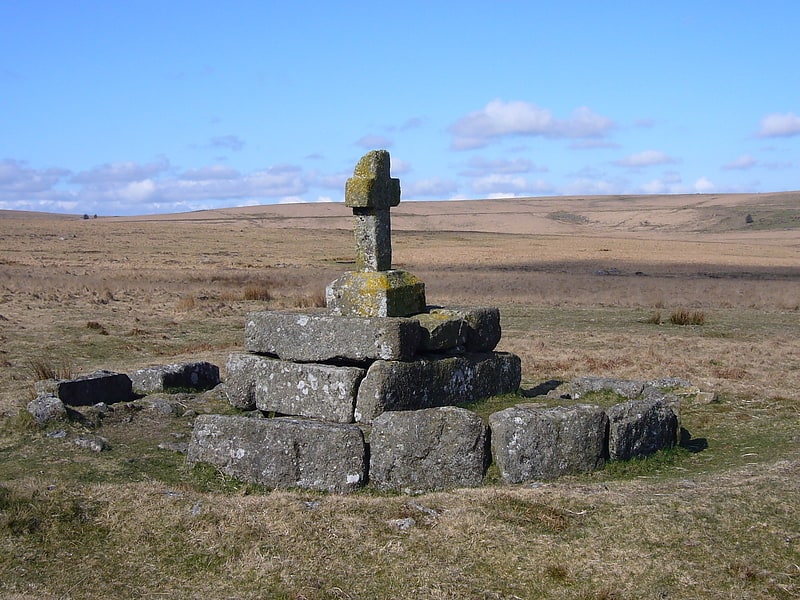
Childe's Tomb is a granite cross on Dartmoor, Devon, England. Although not in its original form, it is more elaborate than most of the crosses on Dartmoor, being raised upon a constructed base, and it is known that a kistvaen is underneath.
A well-known legend attached to the site, first recorded in 1630 by Tristram Risdon, concerns a wealthy hunter, Childe, who became lost in a snow storm and supposedly died there despite disembowelling his horse and climbing into its body for protection. The legend relates that Childe left a note of some sort saying that whoever found and buried his body would inherit his lands at Plymstock. After a race between the monks of Tavistock Abbey and the men of Plymstock, the Abbey won.
The tomb was virtually destroyed in 1812 by a man who stole most of the stones to build a house nearby, but it was partly reconstructed in 1890.[3]
Crazywell Pool

Pond in England. Crazywell Pool or Crazy Well Pool is a large pond situated about 3 km south of Princetown just off the path between Burrator and Whiteworks on the western side of Dartmoor, Devon, England at grid reference SX582705. It is about 100 metres long and has a surface area of about 3,500 square metres.
The pool is thought to be the result of excavations by tin miners, and is either a flooded mine shaft, or a reservoir. The presence of tin workings downhill from the pool support this view. The valley of (Newleycombe Lake) has been extensively worked with many mining remains along its short length. The level of the pool never varies much from its mean—it is maintained by a hidden spring and by subterranean drainage at its lower end. Near to the pool is Crazywell Cross, one of the line of crosses that marked the ancient track between Buckfast Abbey and Tavistock Abbey.
In 1998, Nathaniel Burton, a sixteen-year-old recruit in the Royal Marines died in Crazywell Pool. He was taking part in a routine training exercise and drowned while crossing the icy waters of the pool.[4]
Great Mis Tor
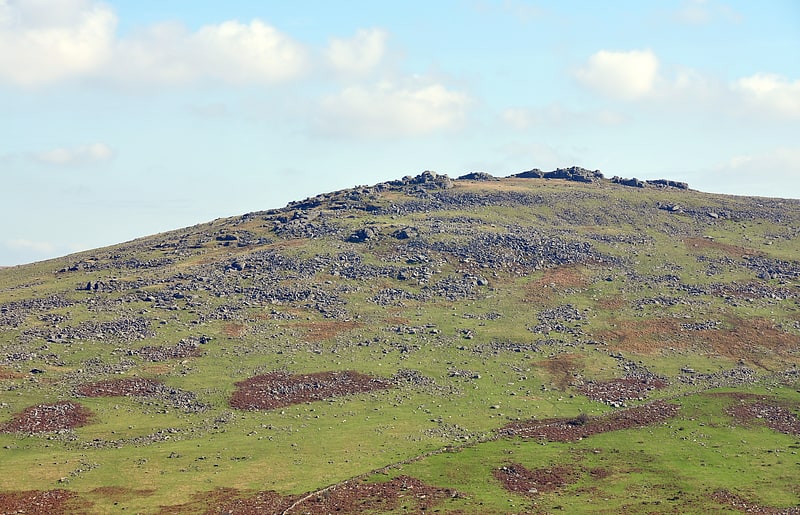
Hill in England. Great Mis Tor is a hill with a rocky outcrop situated in Dartmoor. It has been called one of the grandest hills in Devon, and lies above the River Walkham, about 4 miles north-east of Princetown.
There is a notable rock basin on the peak, called the Mis Tor Pan or The Devil's Frying Pan.
The hill and surrounding area is on land owned by the Duchy of Cornwall, which is leased to the army. There have been cases of deaths and injury to the public caused by unexploded munitions in the area.[5]
North Hessary Tor

North Hessary Tor is a 517 metres hill just above Dartmoor Prison, in Princetown within Dartmoor Forest civil parish, which is in the borough of West Devon, Devon, England. The tor is one of the boundary points mentioned in the perambulations of the Forest of Dartmoor.
Standing on the summit is the North Hessary Tor transmitting station, an FM radio and television transmitter which uses a 196 metres (643 ft) high guyed mast. It was built by the BBC in 1955 when a transmitter was needed to introduce 405-line television into Devon. It now carries a small UHF TV transmitter which serves Princetown and Dartmoor. FM radio transmissions began in 1956 and cover most of Devon and eastern parts of Cornwall.[6]
Down Tor
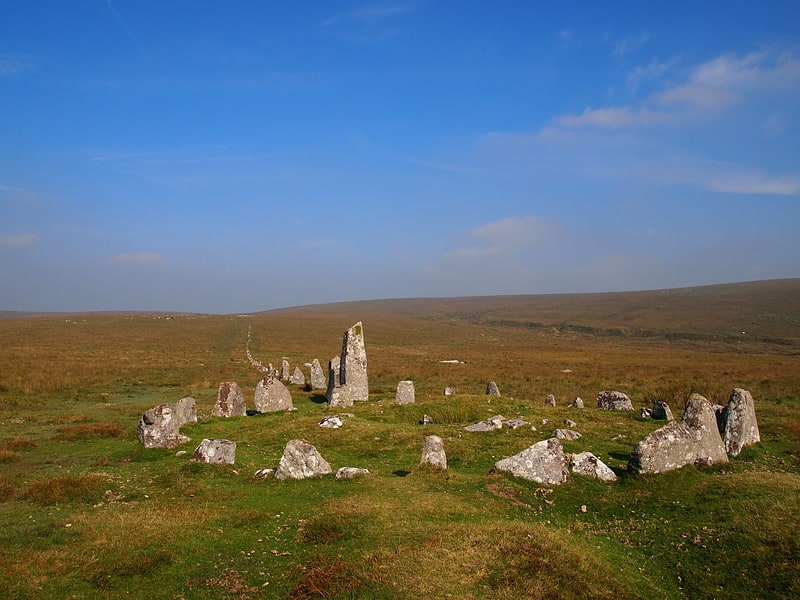
National park in England. Down Tor is a tor on Dartmoor, England, at GR 581694, height 366 metres, overlooking Burrator Reservoir.[7]
Vixen Tor
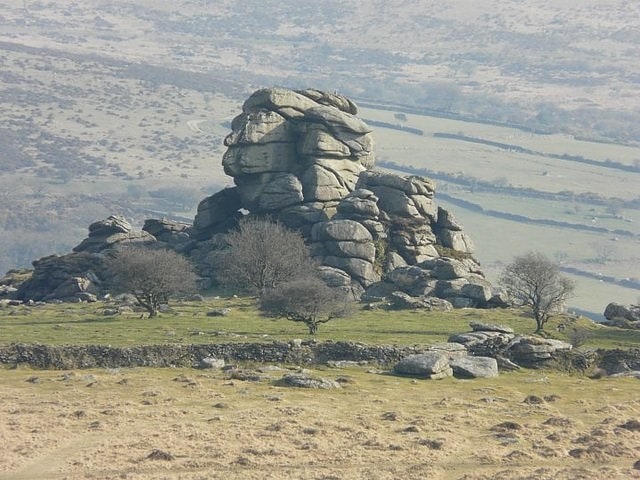
Tor. Vixen Tor is a tor on Dartmoor, England. The tor is on private land and since 2003 access by the public has been banned, causing protests and mass trespassing by hikers and climbers.[8]
Dartmoor crosses
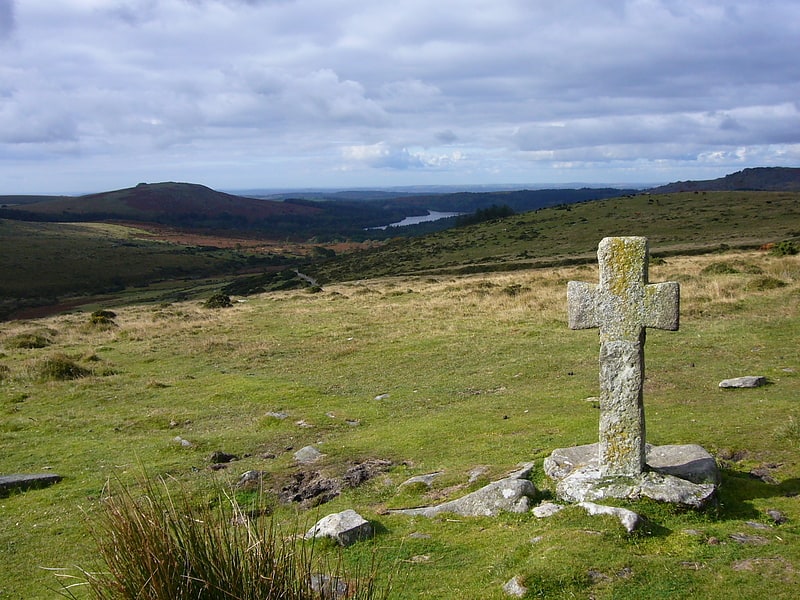
The Dartmoor crosses are a series of stone crosses found in Dartmoor National Park in the centre of Devon, England. Many of them are old navigational aids, needed because of the remoteness of the moorland and its typically bad weather. Some mark medieval routes between abbeys. Other crosses were erected as memorials, for prayer, as town or market crosses, in churchyards, and as boundary markers. The crosses were erected over a long period of time, some as recently as 100 years ago, the earliest probably almost 1,000 years ago.
In 2005, the Dartmoor National Park Authority had an ongoing project to microchip the most vulnerable of its granite artifacts, including crosses, to deter theft and aid the recovery of any that might be stolen.[9]
Devonport Leat
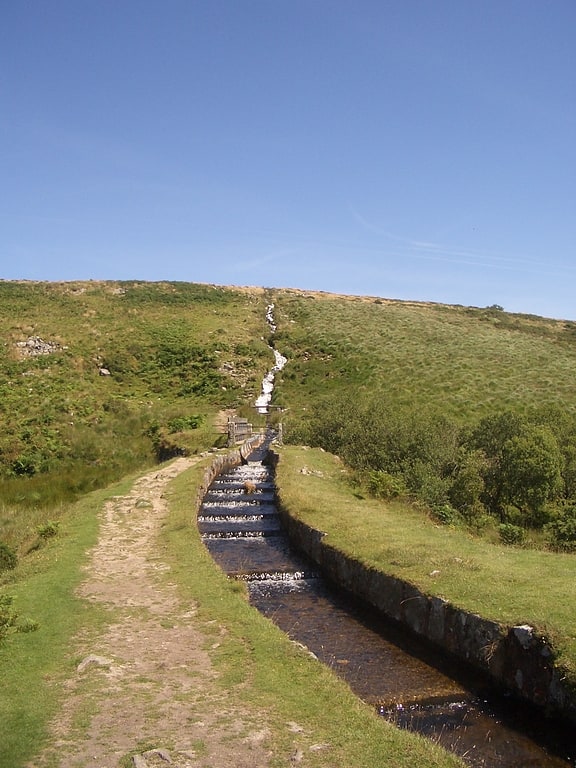
The Devonport Leat is a leat in Devon constructed in the 1790s to carry fresh drinking water from the high ground of Dartmoor to the expanding dockyards at Plymouth Dock.[10]
Beardown Tors
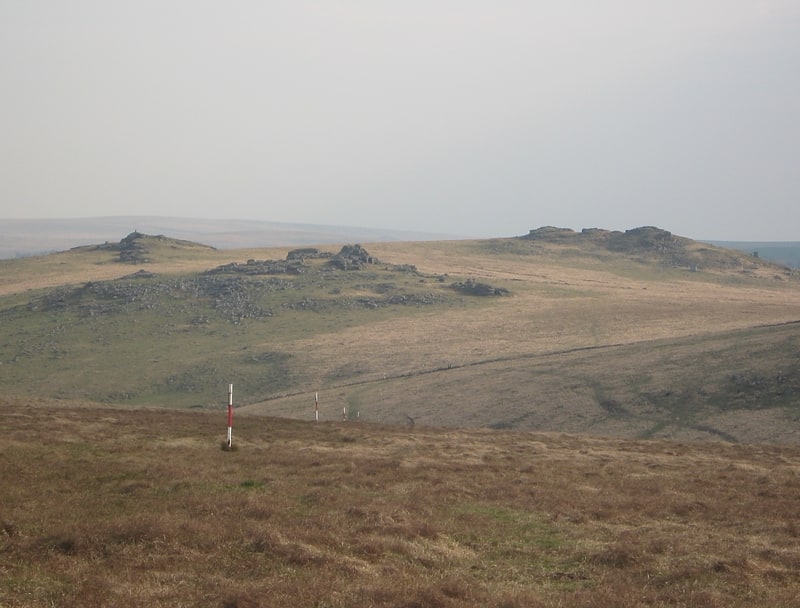
Summit in England. Beardown Tors is the 14th highest summit of Dartmoor with a height of 513 metres.[11]